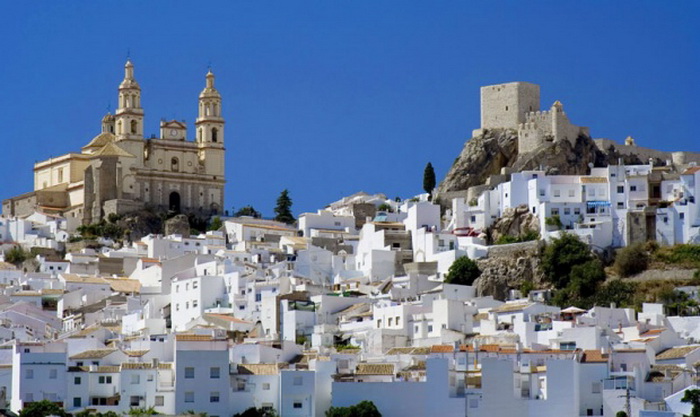
Cadiz, founded in 1100 BC on a peninsula 76 miles (122km) south of Seville as a Phoenician trading post, is the oldest inhabited city in Europe and a popular holiday destination. It had to wait, however, until the 16th century before it came into its own as a launching point for journeys to the newly discovered lands of the Americas. From here Columbus set out on his second voyage. Sir Francis Drake later famously raided the city, as did Napoleon. The city's old town is picturesque and Moorish, with cobbled streets and squares, presided over by the Cathedral with a golden cupola. There is a gallery displaying some of Goya's works, and some lush parks on the headlands which offer panoramic views of the bay. The city is also home to some of Spain's loveliest beaches, including La Playa de la Caleta situated between two castles of the Old City, and La Playa de la Victoria, which is the most visited by holidaymakers for its safe bathing and watersports.

Shopping A great place for quality Andalucian items like ceramics and leatherwork is Belle Epoque, close to the Museo de Cádiz. For incredible local foods go to Hecho in Cádiz. There are excellent food markets at Mercado Central de Abasto (the Central Market), La Merced and San Jose where high quality wine, sausages, and cheeses can be bought.
Restaurants They say that Cadiz is home to the best fried fish in the world - and the best in town can be found at Las Flores Freideria on Plaza Topete.
Nightlife Cadiz has a lively nightlife scene, with something for everyone, from laid-back beach bars serving tapas and ambient music to all-night clubs. The foundation for most evenings out is laid by tapas and sundowners, and the practice of botellón, which involves buying your own alcohol and drinking while strolling the plazas or the beach. The main nightclubs are on Playa Victoria beachfront, and tend to open around 10pm. The most popular club in town, from 4am when it opens, is El Hoyo on Calle Manuel Rancés.
Activities Take a tasting tour along the Jerez wine route. Stroll cobbled stone alleys of the beautiful ancient old city or take some time out to visit Puerto del Cabrito for a view across the Straits of Gibraltar to Africa. Visitors to Cadiz should be sure to include on their holiday itinerary a trip to the town's cathedral and the Fine Arts and Archaeology Museum. Kite surfing in Tarifa is also a popular activity in Cadiz.
Negatives Cadiz is a well-developed, hugely popular destination and therefore not suitable for those wanting a quiet holiday or looking to experience a traditional Spanish village.











































